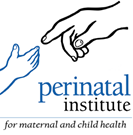


|

|



| A1 What’s the use of customised growth charts? |
| Customised charts predict the growth potential of each baby and display the gestation related optimal weight (GROW) curves. This is done by adjusting for known constitutional / physiological variables (maternal height, weight, ethnic origin and parity), and excluding pathological factors such as smoking and diabetes. As a result, GROW charts are better at identifying pathological growth and confirming when growth is normal than any population based chart. For further information, please see www.gestation.net/literature.htm |
| A2 What do the lines on the chart signify? |
| The middle line (50th centile) is the optimal growth curve, which goes through the ‘Term Optimal Weight’ (TOW) point at 40 weeks. The upper and lower lines show the 97th and 3rd centile limits, respectively, for fetal weight. With any assessment of growth, the slope of serial measurements is more important than individual points. |
| A3 Do previous birth weights affect the centile lines on the chart? |
| No, but it is important to input previous baby weights so that the software can display centiles for each baby, to assist risk assessment in the current pregnancy. |
| A4 Do I need to generate a GROW chart for a woman who books at 30 weeks gestation? |
| Yes, and the entry of her weight will be an approximation (unless her pre- or early pregnancy weight is known). In any case, late bookers should be considered for serial scans as the accuracy of the gestational age and EDD is likely to be poor. |
| A5 The electronic system in the GP surgery where I am based shows a population based fundal height chart. Many GPs do not have training in the use of customised charts they are falsely reassured by this information. Help! |
| It is vital that all clinicians providing antenatal care for women are trained and competent in the use of standardised fundal height measurement and plotting on the mother’s own customised growth chart. One size does not fit all – the chart needs to be adapted to the characteristics of the pregnancy. |
| A6 Customised charts for Twins |
| Customised charts are recommended for twin pregnancies and both twins can be electronically plotted in GROW 2.0. Tooltips will show the growth rate and the exact centile each twin is on. The tool tip will also calculate discordance between the two fetuses. |
| A7 Ethnicity Table |
| The Perinatal Institute’s ethnicity tables are developed for use of fetal growth and birthweight assessment, which has different requirements than classifications used for social or political reports. The tables are based on the GEO concept (geographical ethnic origin) as outlined here https://www.pi.nhs.uk/geo/geo.pdf. This method was used in the national hand held maternity notes, and has been updated regularly as more data become available to refine the groups and coefficients by which the GROW standard is customised for normal ethnic variation. |
| A8 Ethnicity is often associated with social deprivation. How do you know that it is valid to adjust for ethnic origin? |
| The GROW method for calculating growth potential considers other factors, including index of multiple deprivation (IMD), and calculates the differences in growth and birth weight which still exist AFTER excluding pathological factors as well as social deprivation [1]. There is other evidence that standards should be adjusted for ethnic variation, from the UK [2], US [3] and Canada [4,5]:
|
| A9 Why do I need to enter the mother's booking weight for previous pregnancies? |
| The birthweight centiles for previous babies is calculated using the booking weight for the relevant pregnancy. This ensures an accurate calculation of birthweight centile for each baby for SGA risk assessment in the current pregnancy. Where possible it is advised to enter the mother's weight at the beginning of each previous pregnancy as it may affect the previous babies' birth weight centiles. If you do not have this information then you can enter the booking weight in the current pregnancy, although this might result in a different centile to what may have been calculated at the end of that pregnancy. |
| A10 How do we produce a customised chart for a surrogate mother, or when a donor egg is used? |
| In all circumstances it is the characteristics of the host mother that is used to produce the customised growth chart. |
| A11 If previous babies have the same birth weight, and same maternal characteristics, why are their birth weight centiles different? |
| When creating a customised chart, the physiological variables included are maternal height, weight, ethnicity as well as parity. As the expected birthweight increases with parity, having the same birthweight in different pregnancies will result in a lower birthweight centile. |
| A12 Obesity is not ‘normal’, so why do we customise for high BMI? |
| As you know we are keen to adjust for physiological / constitutional characteristics only. However high BMI is pathological. For a standard mother, within normal BMI limits or a bit above, the predicted term optimal weight (TOW) increases with increasing maternal weight. However much beyond that the TOW peaks and starts to fall. In statistical terms, the multiple regression analysis usually results in a quadratic formula for maternal weight, with the quadratic (second order) coefficient being negative, so that the TOW falls eventually as weight increases. You can see this in Fig 1 in a publication on an Iranian dataset [1]. When you add ‘High BMI’ as an additional, separate variable into the regression in addition to height and weight, you can see that it has a negative effect on birthweight. This is shown for example in analyses of a US dataset [2] (Table 2) and a recent one from Slovenia [3] (Table2). Obesity therefore increases the risk of fetal growth restriction, and customised standards are able to identify this association, while population based standards tend to hide it, as SGA rate drops with increasing maternal BMI. See Ref [4], Figure 2.
|